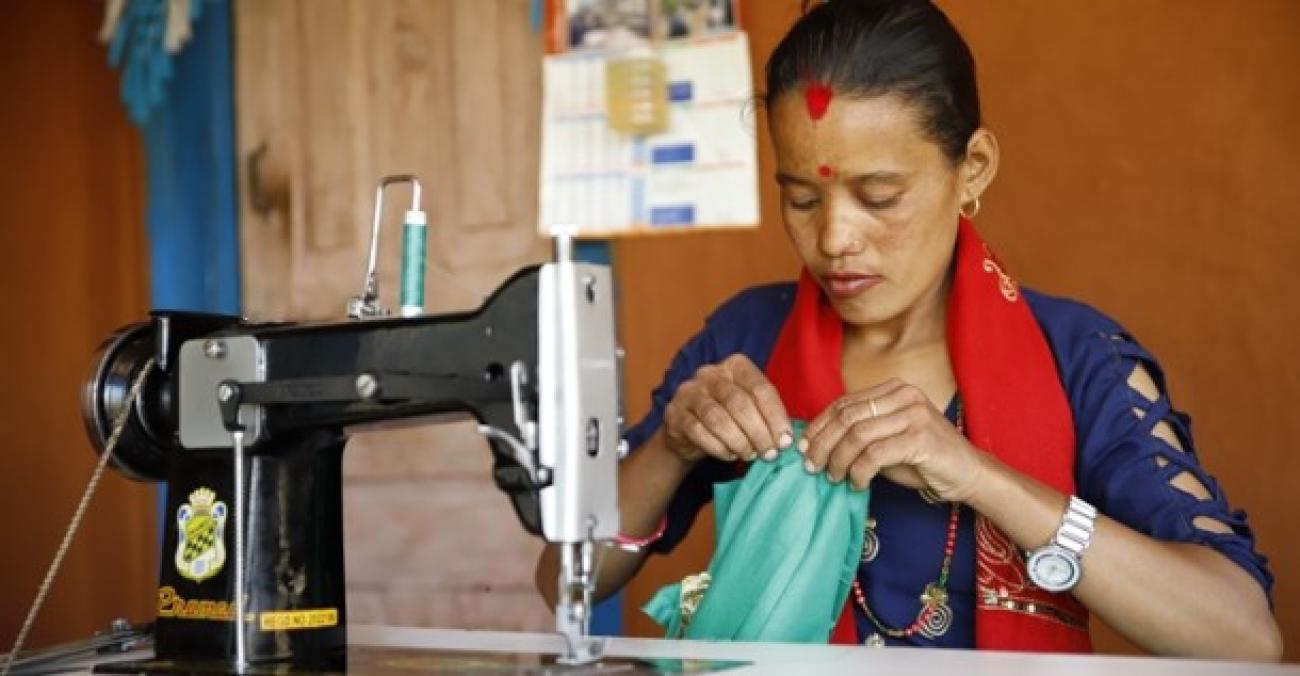“I had no chance to go to school in my big family of 21,” explains 30-year-old Kalasha Khadka Khatri from Chingad Rural municipality in Surkhet District during a video interview with UNESCO. She struggled to provide two meals a day for her family and lost two of her children when she was unable to pay for healthcare. Speaking about her difficulties, she adds that she “could not afford to go to the health post for treatments.” Kalasha enrolled in a tailoring training in her local Community Learning Centre (CLC) and has since been able to manage her daily needs and wishes to pass on what she has learned to others.
This is not an isolated story. Despite a steady upward trend in Nepal’s adult literacy rate, now at 68%, communities who live in rural, hard to reach locations like Kalasha, risk having few education opportunities. Four out of five people in Nepal live in rural contexts and a 2008 Government survey showed that young people living in rural areas have fewer training opportunities than their urban counterparts, with women being particularly disadvantaged.
CLCs are key to tackling this disparity. The centers are usually set up and run by locals and function outside the formal education system, providing lifelong learning and leadership opportunities to marginalized communities.
“The training gave me a voice and skill.”
UNESCO’s Capacity Development for Education (CapED) Programme has been supporting the government to strengthen CLCs. The Programme assists centres to ensure that their courses are relevant to the community and are in line with the policies and plans at all levels of the federal system.
The end beneficiary of this institutional capacity development is of course the learner. We talked to women like Kalasha who also took part in a sewing course at Jagaran CLC. “The training gave me a voice and skill,” says 30-year old Harikala Buda. She was a complete novice to sewing but since completing the sewing course, she can sew basic clothes. She speaks of her achievements with pride, saying that she worked full time to produce over 150 dresses during the festive season of Dashian. Now, she has earned enough to pay for her own sewing machine.
Another learner is 20-year-old Bhawana Sharma. After her father passed away when she was young, her mother raised her and worked hard to provide her with education. Due to their financial situation, Bhawana dropped out of school for a year and took the training in order to support her family. Today, she runs her own tailoring shop and has recently joined a Bachelor’s degree which supports her to continue studies alongside her work.
In 2019, CapED strengthened over 300 CLCs, raising their awareness of SDGs, enhancing coordination with local government in line with the decentralization of education, and training CLC leaders in management and fund raising skills.
Informed by its experience with CLCs, UNESCO is currently supporting the Government of Nepal to develop a lifelong learning policy framework. This will guide Local Education Acts and Plans that will allow provincial and local governments to deliver lifelong learning opportunities for the most marginalized and vulnerable people in Nepal.


